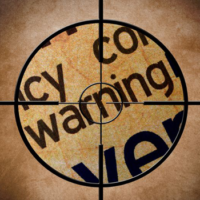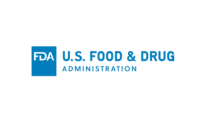BPA is a chemical that has historically been used, among other applications, in the linings of food and beverage containers. On May 11, 2015, BPA was added to California’s Proposition 65 list of chemicals known to the state to cause reproductive toxicity. Under the statute, the warning requirement was set to take effect one year later, in May 2016.
However, at the food industry’s urging, the California Office of Environmental Health Hazard Assessment (OEHHA) adopted an “emergency” regulation just before the BPA warning requirement came into effect. The emergency regulation allowed food and beverage companies to comply with Proposition 65 by having their trade associations distribute general BPA warning signs for all products sold in cans or bottles that California for retailers to post at each point of sale.
In December 2016, an “interim rule” replaced the emergency regulation. The interim rule allowed for the point of sale warning program to remain effective until December 30, 2017, with certain additional reporting to OEHHA concerning the food and beverage products whose cans and bottle caps continued to utilize intentionally added BPA. The interim rule was essentially intended to provide food and beverage manufacturers with more time to try to convert over to cans and bottle caps with liners that do not contain intentionally added BPA.
At the end of 2017, the interim rule expired and businesses that were not able to avoid the use of BPA will need to defend the lack of warnings for their products that give rise to BPA exposure or justify the warnings they rely on for BPA as being “clear and reasonable” under the statute.
What’s in Store for 2018
At this point, OEHHA has not promulgated a further BPA-specific warning regulation, so its regular Proposition 65 regulations governing safe harbor warnings for foods or beverages are one way that a business can choose to comply as of the beginning of 2018. However, the regular Proposition 65 safe harbor warning requirements may be unattractive for several reasons, and they will become even more onerous after OEHHA’s updated regulations go into full effect at the end of August 2018. Therefore, food and beverage processors that have not converted to packaging formulations with no intentionally added BPA may instead elect to defend a decision not to warn based on the small amount of exposure to BPA arising from their products and/or to defend continuing to warn through a non-safe harbor method like that which has existed under the emergency regulation and interim rule.
For those that do intend to switch to a safe harbor warning method in 2018, the following information may be relevant.
Post-2017 Safe Harbor Warning Requirements
Effective until August 30, 2018:
For foods and beverages raising BPA exposure issues that are manufactured prior to August 30, 2018, and which are not sold for immediate consumption on the premises or adjacent areas, the following generic warning may be used and communicated via product labels:
WARNING: This product contains chemicals known to the State of California to cause birth defects or other reproductive harm.
As an alternative to product labeling, until August 30, 2018, the same warning statement may be posted as a shelf sign at each location within California where the product is displayed.
Operative as of August 30, 2018 (but may be relied upon immediately):
For foods and beverages raising BPA exposure issues that are manufactured on or after August 30, 2018, and which are not sold for immediate consumption on the premises or adjacent areas, the following warning may be used:
WARNING: Consuming this product can expose you to chemicals including [name BPA or another listed chemical], which is [are] known to the State of California to cause birth defects or other reproductive harm. For more information go to www.P65Warnings.ca.gov/food.
For warning on a label, the above statement must be set off from other surrounding information and appear within a box. Alternatively, it may be presented via a shelf sign wherever the product is displayed for sale in California. For either a label or a sign, in some circumstances a foreign language translation of the warning statement may also be required.
For alcoholic beverages and for food and beverages sold in food facilities that are intended for immediate consumption on the premises or in adjacent areas, OEHHA’s updated safe harbor warning regulations provide alternative warning statements that may be preferable to that shown above.
Robert L. Falk, Esq., and Michael J. Steel, Esq., are environmental lawyers at the global law firm Morrison & Foerster. Lois Miyashiro, an environmental analyst in the firm’s San Francisco office, assisted in the preparation of this article.




